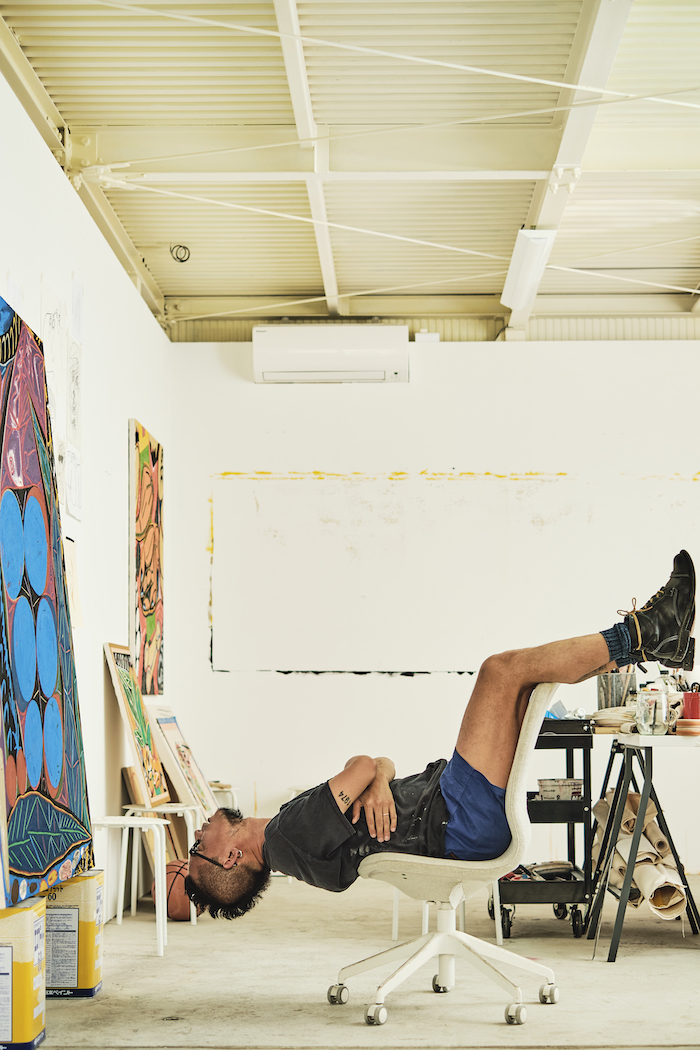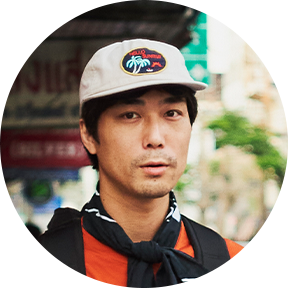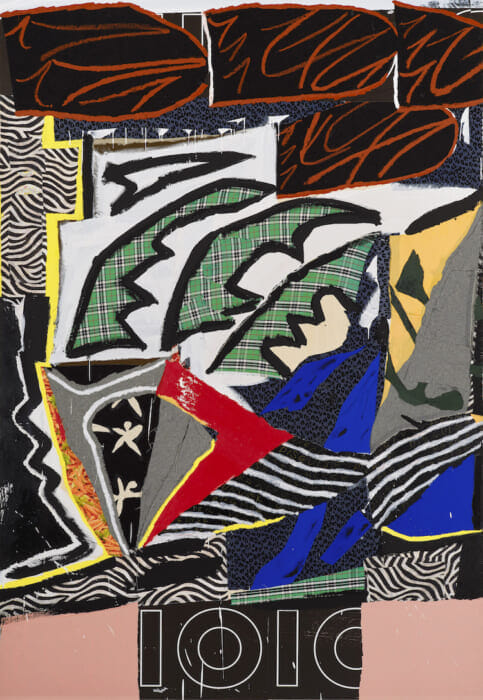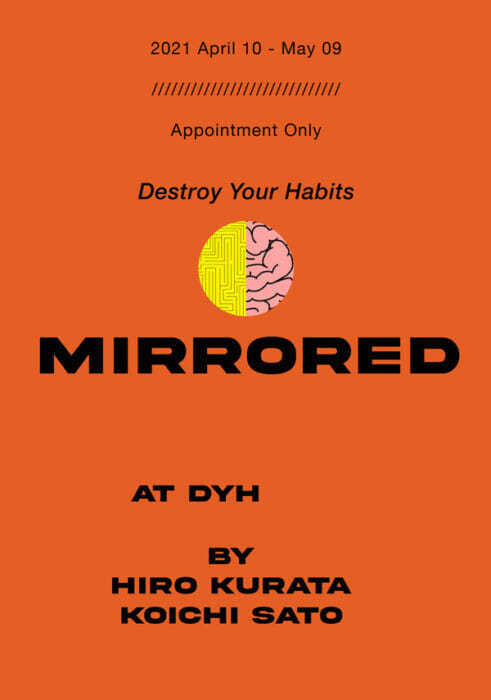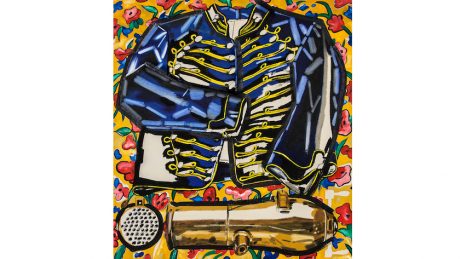© Yosuke Torii
Bijutsu Techo, an art magazine first published in 1948, opened a store and gallery space on the second floor of Shibuya PARCO as a marketplace for art.OIL by Bijutsu Techo".
Here, from Friday, July 31 to Tuesday, August 18, are contemporary artists who have held solo exhibitions around the world,Shohei TakasakiThis is a solo exhibition "sun, snake, nipples" by
Shohei returned to Japan last year from Portland, U.S.A., where he spent about six years, and has now relocated to Tokyo. We visited his atelier, where he creates artworks on a daily basis, and talked with him about his upcoming solo exhibition.
PROFILE
A contemporary artist from Saitama, Japan. He has held shows in Portland, Los Angeles, Kuwait, Melbourne, Hong Kong, Tokyo, etc. He will relocate from Portland, USA to Tokyo in the summer of 2019, where he will present site-specific works focusing on the theme "function," which he has been working on in recent years. He has been presenting site-specific works centered on the theme "function" that he has been working on in recent years.
I had not been able to hold a show in Tokyo since the last one two years ago, so I wanted to do it. Then I received an offer from "OIL by Bijutsu Techo" through the curator Eri. Bijutsu Techo is a good media, and I was very happy to accept the offer.
In his white-based atelier, which he rented after returning to Japan, there were many of his paintings of various sizes lined up in a small space. Shohei, who also paints large works, had a hard time finding a studio to serve as his base.
When I was in Portland, I used my garage as my studio. In Japan, there was initial talk of sharing a large former factory site with artists, but it never came to fruition. Nowadays, we have the Internet, and if you are an artist who paints large works, you could share a studio in a rural area where you can live inexpensively. I would come to the city a few times a month to meet people I wanted to meet.
Found object(sun, snake and nipples)
Found object(snake, plant and bright sun)
The solo exhibition "sun, snake, nipples" will be held this time. The literal translation is "sun, snake, nipples," a strange sequence of characters that somewhat reminds us of Greek mythology. About 10 abstract paintings will be exhibited.
This time, I wanted to do abstracts. Abstract expression simply means that it is difficult to tell what the motif is at first glance. For example, a realistic painting that can be recognized as scissors at a glance is not abstract. Painting scissors so that they don't look like scissors is abstract. What do you think these are? I wanted to create a work that would come alive by creating a story for the viewer when he or she faces the art piece. Abstract is my starting point, but I have learned a lot, and I feel like I have come full circle. It feels good.
He continued, "Abstract art is not an expression that can be explained in words from one to ten to convince others, and it does not matter how it is perceived. I could sense that he is placing emphasis on the viewer's multifaceted awareness of what he or she thinks about the work of art. Then, what is the significance of exhibiting abstract works at this time?
I think the Corona disaster gave me an opportunity to think that what had been "normal" for me might not be normal at all. I think the Corona disaster gave me an opportunity to think about how I would like to live, and whether I really want to stay here. For example, it gave me a chance to look at things from a different angle, such as how I want to live in the future, whether I really want to stay here, and with whom I want to spend time. Abstract expression forces the viewer to think, so by confronting the work, you can ask yourself, "What is this? What is the reason why it is here? It is simple, but that kind of action is very important nowadays. It is simple, but I think such an act is very important nowadays.
One of Shohei's favorite artists is Robert Smithson. His masterpiece "Spiral Jetty," in which minerals, iron, and rocks are arranged in a spiral shape on Salt Lake Lake in Utah, is approximately 457 meters long, making it impossible to see the work with the naked eye.
I think there is a connection with abstract art. While you can only see a part of an art piece with the naked eye, you can imagine the whole picture and connect it to the work. You can't understand a large piece of artwork by looking at its details alone, but you can imagine what it is and wonder what it is. This is a different way of experiencing a small art piece, and it is one of the reasons why I prefer large works of art.
To imagine means to find the meaning of the existence of the "thing" in one's own way. In other words, you must create your own correct answer to the work of art presented to you. However, there is also the difficulty that comes with artwork.
Basically, an "art piece" is just trash to people who aren't interested in it. Artists are not really eco-friendly. For example, a painting is just a canvas on a piece of wood, and it has essentially no 'function' as an object. However, it is interesting precisely because there is nothing there. There is a lot of space left to wonder what value can be found in this work. To give meaning to something that has no meaning is an act that only humans can perform. There are artists who cannot explain their work, but I don't think that makes them artists.
When I received the details of this exhibition, there was one thing I was not familiar with. It was that it was prominently noted that Ms. Eri Takane, who is active in art management and other fields, would be participating as the curator of the exhibition. Why is this the case, when usually only the artist's name is on the exhibition?
In Japan, it may be rare to see the curator's name appear so prominently under the artist's name. I am planning to have a talk event with her about this show. I would like her to continue to be active as a curator and art advisor, and I hope there will be more independent curators in Japan. It would be great if there were more independent curators in Japan. Galleries and museums can keep their programs fresh by bringing in ideas and minds from outside.
Shohei is not stuck in rigid ideas, and he is also willing to implement new suggestions. When asked what new challenges he would like to take on now, he suggested becoming a chef, a civil engineer, or a comedian.
I think it's great that people can do the same thing all their lives, like craftsmen. I get bored, and I don't like musicians like the Ramones (laughs). As my life changes, I think it is unnatural for my expression to change as well. When you decide to start something new, you just have to give it a try. You have to keep changing. I don't want to be defined as "this is Shohei Takasaki. I want to stay flexible.
Shouhei Takasaki Solo Exhibition "sun, snake, nipples" Curated by Eri Takane
Dates: Friday, July 31 - Tuesday, August 18
Location: OIL by Bijutsu Techo
Address: 2F Shibuya Parco, 15-1 Udagawa-cho, Shibuya-ku, Tokyo
Phone: 03-6868-3064
Hours: 10:00 - 21:00 (in accordance with Parco's business hours)
Admission: Free
Gallery Home Page
Artist Home Page


